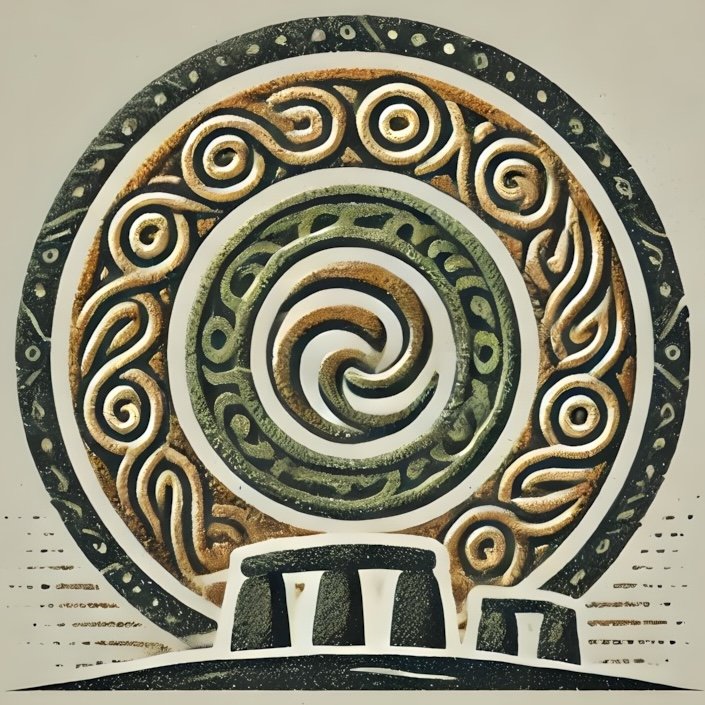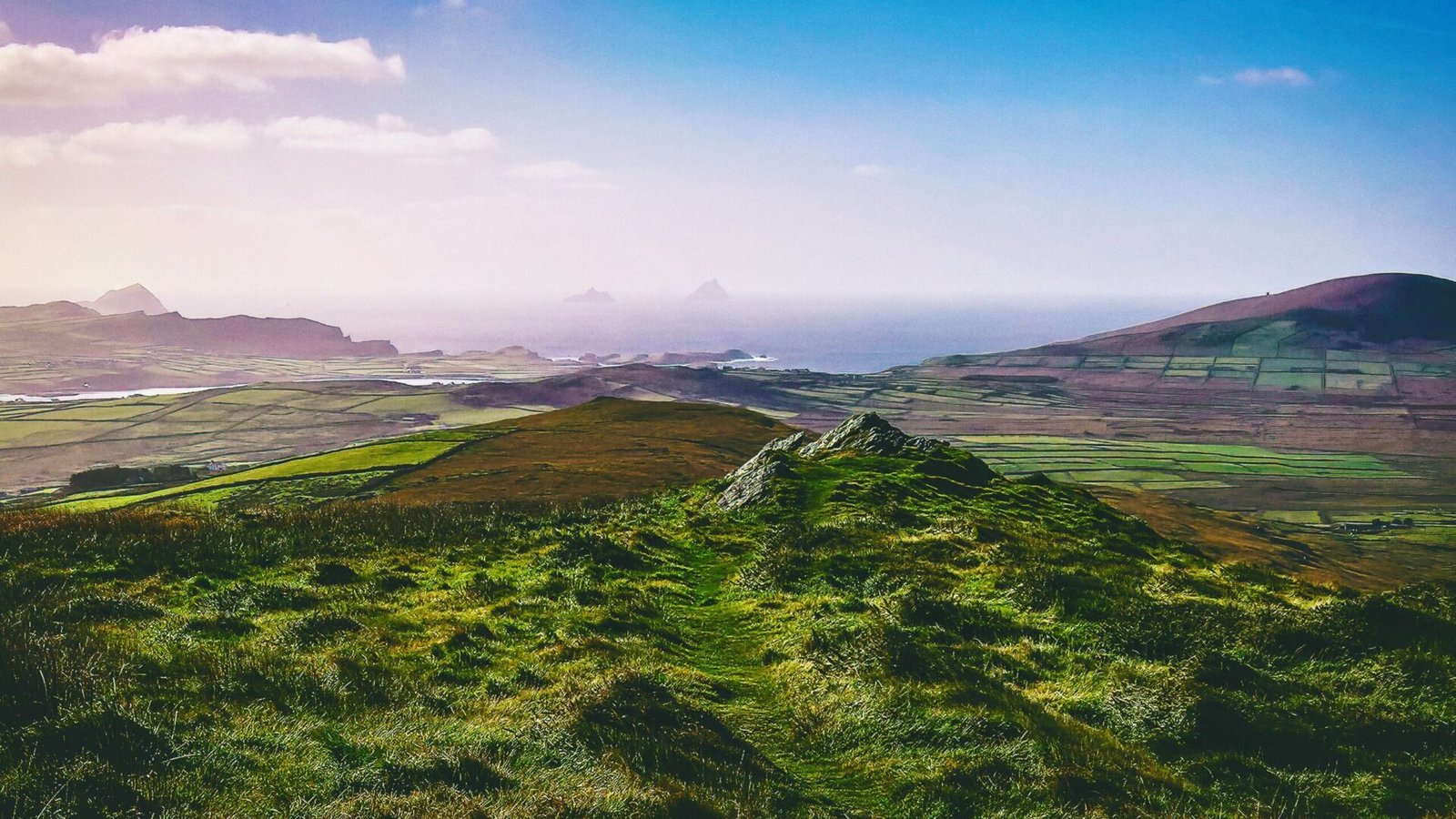The Mesolithic Era, spanning from approximately 8000 to 4000 BCE, marks a pivotal chapter in Ireland’s prehistory. This period, often referred to as the Middle Stone Age, witnessed the arrival of the first peoples on the island, who adapted to a changing landscape and laid the foundations for future cultures. This pillar page will explore the arrival of these early inhabitants, their lifestyles, the tools they crafted, and the mythological echoes that resonate through Irish folklore even today.
Arrival of the First Peoples: Who Were They?
The arrival of the first peoples in Ireland is a story woven into the fabric of the island’s history. These early inhabitants are believed to have migrated from continental Europe around 8000 BCE, following the retreat of the last Ice Age. As the glaciers melted, the landscape transformed from a barren tundra into a lush, green environment teeming with wildlife. This rich biodiversity made Ireland an attractive destination for hunter-gatherer groups seeking new resources.
The first peoples were likely small bands of nomadic hunter-gatherers who relied on the land for sustenance. They hunted deer, wild boar, and other game while foraging for berries, nuts, and edible plants. Archaeological evidence suggests that these groups were skilled in exploiting their surroundings, moving seasonally to follow animal migrations and access different food sources.
Early Hunter-Gatherer Sites
As we delve deeper into the Mesolithic Era, it becomes evident that certain sites across Ireland played a crucial role in the lives of these early inhabitants. One of the most significant locations is Mount Sandel in County Derry, where excavations have revealed some of the oldest evidence of human settlement in Ireland. Here, archaeologists discovered remains of dwellings, tools, and evidence of food preparation, painting a vivid picture of daily life during this era.
Another notable site is the Lough Boora archaeological complex in County Offaly. Here, the remains of wooden structures and tools, along with evidence of fishing and gathering, highlight the diverse activities of Mesolithic communities. These sites, along with others like the Céide Fields in County Mayo, provide invaluable insights into the social organization, economy, and environmental adaptations of early Irish peoples.
Tools, Shelters, and Lifestyle
The tools of the Mesolithic people were essential for their survival and reflect their ingenuity and adaptability. They crafted a variety of implements from flint, bone, and wood, including blades, scrapers, and points. These tools were vital for hunting, processing food, and crafting clothing. The development of microliths—small, sharp flint blades that could be affixed to wooden shafts—marked a significant advancement in technology, allowing for more efficient hunting and gathering.
Shelters during the Mesolithic Era varied depending on the environment and available resources. Evidence suggests that early Irish peoples constructed temporary structures using wood, animal hides, and natural materials. These shelters were often located near water sources, providing easy access to fishing and drinking water. The nomadic lifestyle of these hunter-gatherers required them to be resourceful, moving their camps as seasons changed and resources fluctuated.
The lifestyle of the Mesolithic peoples was deeply intertwined with the natural world. They developed a profound understanding of their environment, tracking animal migrations and seasonal changes. This connection to the land fostered a sense of community and shared knowledge, as families and groups relied on one another for survival. Their existence was characterized by a harmonious relationship with nature, a theme that resonates through Irish culture and mythology to this day.
Mythological Echoes: Ancestral Spirits and the Earliest Stories
While the Mesolithic Era is primarily defined by its archaeological record, it is also a time that laid the groundwork for the rich tapestry of Irish mythology. The stories and beliefs of these early peoples have been echoed through generations, shaping the cultural identity of Ireland.
In many ancient cultures, the spirits of the ancestors were believed to inhabit the land, and this belief likely held true for the Mesolithic peoples. The landscape was not just a physical space; it was imbued with spiritual significance. Mountains, rivers, and forests were seen as sacred, and the spirits of the ancestors were thought to watch over the living. This connection to the land is reflected in later Irish mythology, where deities and heroes often interact with the natural world.
The oral traditions that emerged from these early societies gave rise to a wealth of stories that would be passed down through generations. Tales of the Tuatha Dé Danann, the mythical race of gods and heroes, can be traced back to the beliefs of these early hunter-gatherers. The reverence for nature and the cycles of life and death found in these myths echo the experiences of the Mesolithic peoples, who lived in close harmony with their environment.
As we explore the landscapes of Ireland today, we can still feel the echoes of these ancient stories. Sites such as the Hill of Tara and the ancient burial mounds at Newgrange serve as reminders of the deep-rooted connection between the land, its people, and their myths. These locations are not just historical landmarks; they are sacred spaces that hold the memories of those who walked the earth long before us.
The Mesolithic Era
The Mesolithic Era represents a fascinating chapter in Ireland’s prehistory, marked by the arrival of the first peoples and their adaptation to a changing landscape. Through their tools, shelters, and lifestyles, we gain insight into the resilience and ingenuity of these early hunter-gatherers. Moreover, the mythological echoes of this era remind us of the deep connection between the land and its inhabitants, a theme that continues to resonate in Irish culture today.
As we traverse the Irish landscape, from the ancient sites of Mount Sandel to the sacred hills of Tara, we are reminded of the enduring legacy of the Mesolithic peoples. Their stories, woven into the very fabric of the land, invite us to explore, reflect, and connect with the rich history that has shaped Ireland into the vibrant nation it is today. Whether you are a history enthusiast, a nature lover, or a seeker of stories, the Mesolithic Era offers a captivating glimpse into the lives of those who first called Ireland home.

